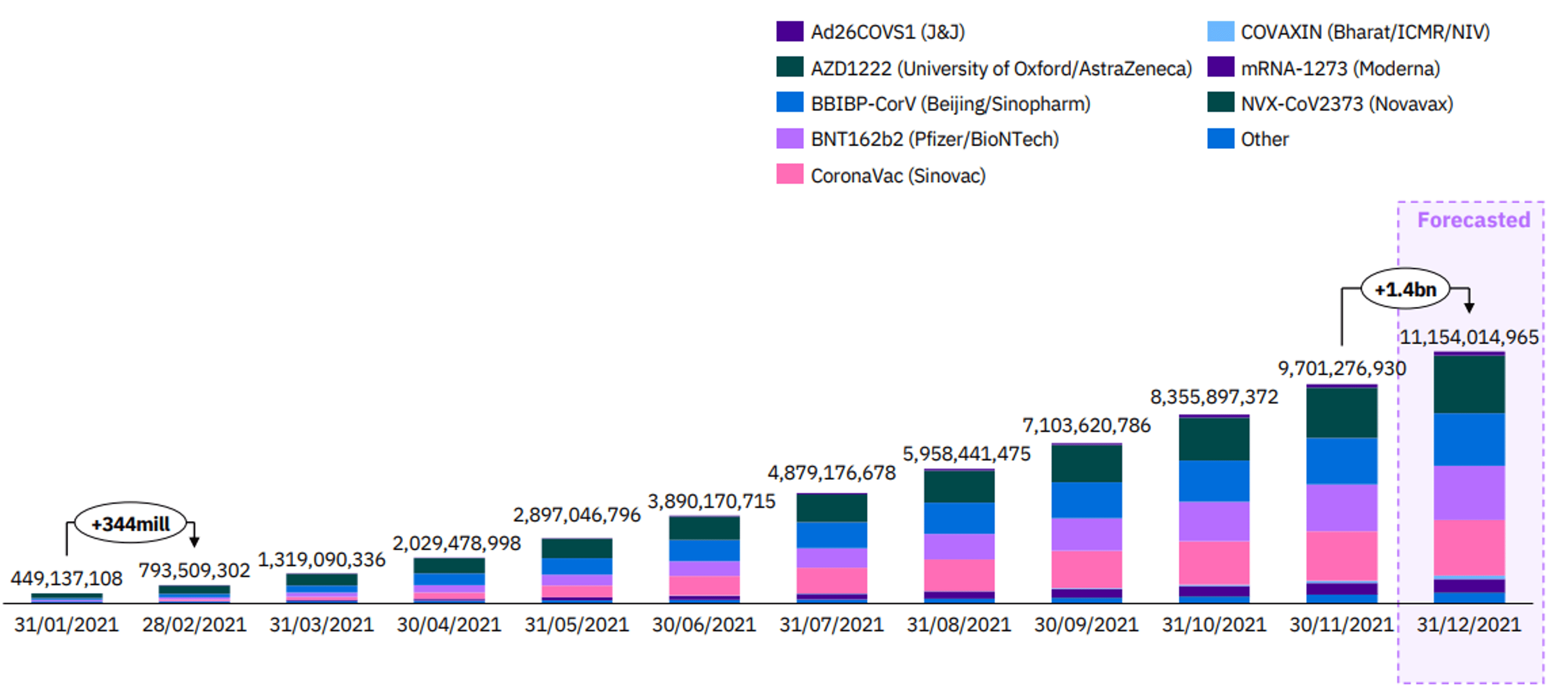

FULL CLAIM: It would take decades to produce enough COVID-19 to vaccinate the world population; “how have 7.8 billion covid vaccines already been manufactured, delivered and administered, for a novel virus that has only been around since 2019?”
REVIEW
A Facebook reel from early December 2024 claimed that the math of COVID-19 vaccine manufacturing didn’t “add up”, alleging that it would take decades to produce enough vaccine doses to vaccinate the world population. The reel is a repost of a TikTok video published in December 2021, about one year after the COVID-19 vaccination campaign started. Combined, both videos had more than 270,000 views at the time of writing.
More specifically, the reel calculated that if one manufacturer was making one vaccine dose per second, it would take 32 years to make one billion doses. It further postulated that it would take ten years for five manufacturers with five facilities each to produce enough vaccines to administer one dose to everyone in the world, assuming a world population of 7.8 billion people.
The reel then asked, “How have 7.8 billion covid vaccines already been manufactured, delivered and administered, for a novel virus that has only been around since 2019?” This is typical of the tactic known as “just asking questions”, which involves framing accusations as questions to make them sound more acceptable and to avoid having to provide supporting evidence. In the case of the reel, the implication is that the COVID-19 pandemic was planned and that COVID-19 vaccine production started before 2019.
Science Feedback previously showed that conspiracy theories alleging the COVID-19 pandemic was planned and that the SARS-CoV-2 virus had been identified before 2019 are baseless.
Here, we’ll show that vaccine manufacturing figures directly contradict the reel’s claim.
The fundamental flaw of the claim is that it underestimated the production capacity of vaccine manufacturers worldwide. Data summarized by the health data analytics company Airfinity for global pharmaceutical industry associations showed that more than nine billion doses of COVID-19 vaccines were produced in the first eleven months of 2021 (Figure 1). We calculated this to be equivalent to a production rate of 336 doses per second, much more than the presumed rate of one dose per second cited in the reel.

Figure 1 – Cumulative number of COVID-19 vaccine doses produced each month in 2021, broken down by vaccine type. Source: Airfinity.
While 344 million doses were produced during the month of February 2021 (137 doses per second), production progressively increased to 1.3 billion doses in November 2021 (519 doses per second) as the manufacturers scaled up their operations.
This was made possible by an increase in production capacity on the part of vaccine manufacturers over the first months of the vaccination campaign. For instance, the European Medicines Agency (EMA) approved or recommended the approval of new manufacturing plants and new production lines in existing facilities in March 2021 for the AstraZeneca, Moderna, and Pfizer-BioNTech vaccines.
A summary of publicly available vaccine manufacturing data by Duke University’s Global Health Innovation Center showed that Moderna, Pfizer, and AstraZeneca had 38 manufacturing sites producing the main vaccine ingredients (mRNA nanoparticles and adenovirus particles) as of June 2022, operated directly or through manufacturing partners. This is more than the figure cited in the claim, which used an estimate of 25 manufacturing facilities to make its calculations.
Another piece of evidence that manufacturers have multiple production sites is that Pfizer advertised twenty production facilities dedicated to COVID-19 vaccines, with a joint production capacity of four billion doses annually.
Another important consideration is that the vaccine manufacturing timeline was accelerated due to the urgency imposed by the pandemic.
For instance, COVID-19 vaccine manufacturers began taking steps to scale up their production capacity after the pandemic started but before obtaining results from clinical trials testing the vaccines’ efficacy[1].
This, alongside other factors such as simplified approval of vaccine packaging and labeling, contributed to the European Federation of Pharmaceutical Industries and Associations’ estimation that it took approximately two to fourteen times less time to produce the mRNA COVID-19 vaccines during the pandemic than conventional vaccines under normal conditions.
In summary, COVID-19 vaccine manufacturing capacity was rapidly scaled up in 2020 and 2021 owing to large-scale political, financial, and industrial collaboration. Data showed that, collectively, vaccine manufacturers across the globe had the capacity to produce hundreds of vaccine doses per second, making it possible to vaccinate the majority of the global population within one year. Thus, the Facebook reel’s implication that this was impossible and must have been because the pandemic was planned is based on several incorrect assumptions.
REFERENCES
- 1- Kalinke et al. (2022) Clinical development and approval of COVID-19 vaccines. Expert Review of Vaccines.


